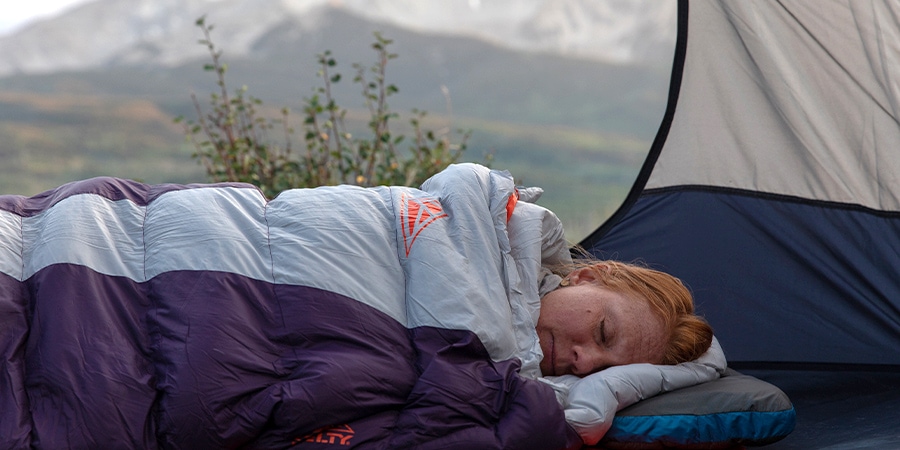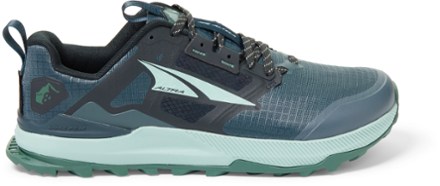
The Best Budget Sleeping Bags: Tested
No one likes being cold, but finding a warm sleeping bag at a more friendly price point may feel tougher than shivering through the night. High-quality affordability has historically been a misnomer. But that changes with these sleeping bags, which make it easier to spend a comfortable night under the stars without blowing your bottom line.Our five favorite budget sleeping bags are great for car camping or backpacking and boast varying temperature ratings, levels of packability and weights. But they do all have one thing in common: They ring in at around $200 or less. Now you're one step closer to your next—or first—camping adventure.Want to create a sleep system? Read our Best Budget Sleeping Pads to find a match for you pad.Test ResultsBest All-Around Budget Sleeping Bag: Kelty Cosmic 20Most Eco-Friendly Budget Sleeping Bag: The North Face Eco Trail Synthetic 20Best Budget Sleeping Bag for Car Camping: Exped MegaSleep 25/40Best Budget Sleeping Bag for Side Sleepers: NEMO Tempo 20 (Women's, men's)Best Value Budget Sleeping Bag: REI Co-op Trailbreak 20Shop All Sleeping BagsBuying AdviceA quality sleeping bag can make or break your next camping adventure, but it may feel daunting if you don't understand what to look for before making your choice. Here are a few factors to consider when snagging yourself a sleeping bag, regardless of its price tag.Weight and SizeWhen it comes to car camping, you can simply pick the warmest, roomiest sleeping bag you like because you won't be shouldering it. For a rundown on all the things to consider, read How to Choose Sleeping Bags for Camping.For backpacking, however, you'll want the warmest, roomiest sleeping bag that fits inside your pack and doesn't weigh you down. You can of course tote however much weight you'd like backpacking, but in this guide, the Kelty Cosmic 20 and REI Co-op Trailbreak 20 are the best for it. They're lighter and a bit more compact than the others here.Note that some sleeping bags have a men's or unisex version and a women's version. Though this is how the brand has distinguished them, a more helpful delineation is to think of them as "warm sleeper's" and "cold sleeper's."Warm sleeper's bags (or men's or unisex) have bigger dimensions and more forgiving temperature ratings. Cold sleeper's bags (or women's) have smaller dimensions and warmer temperature ratings thanks to added insulation. That often makes the cold sleeper's version of the bag heavier and bulkier, despite its smaller dimensions.Type of InsulationSleeping bags are filled with either down insulation or synthetic insulation. In general, down insulation (made from goose or duck plumage) is lighter and more packable, offering the best warmth to weight. Down isn't inherently water-resistant, but today, most is treated to make it hydrophobic. Down insulation is also very durable and will likely hold up to years of packing and unpacking it into a stuff sack. Trade-off: It tends to cost more than synthetic.The Kelty Cosmic 20 is the only bag on our list that uses down insulation.Note: If you opt for a down sleeping bag, be sure to check out the ethical practices of the company making your sleeping bag. These days, most outdoor brands have standards that protect the welfare of the animals, but it's a good idea to be informed.On the flipside, synthetic insulation (like polyester) retains more warmth when wet, making it a popular choice with folks who live in moist climates. It also dries faster than down and is less likely to aggravate allergies. As an added bonus, it is almost always cheaper than down, too. Synthetic insulation is bulkier than down, however, and often comes with a weight penalty.ShapeIn this guide, you'll see two shapes of sleeping bags: mummy and rectangular.A mummy is wider in the shoulders before tapering at the knees and footbox. This eliminates extra space inside the sleeping bag, making it easier to create and maintain warmth. It also cuts down on materials and weight, which makes this style popular in the backpacking and ultralight communities.But there's still some variation there. The Kelty Cosmic 20 and REI Co-op Trailbreak 20 have the narrowest dimensions in our test. The North Face Eco Trail Synthetic 20 and NEMO Tempo 20, on the other hand, are cut wider, which makes them better options for side sleepers and folks who want more space to curl up or spread out inside their bags.A rectangular sleeping bag looks just like it sounds: a large rectangle. The bag does not taper like a mummy bag does and instead maintains its shape to give campers maximum wiggle room. Often, rectangular bags can be fully unzipped and used like a comforter, too. However, this shape does mean there is more dead space in the bag, making it tougher to stay warm.The Exped MegaSleep 24/40 is the only rectangular bag on our list.Temperature RatingWe could pen a thesis on how temperature ratings are determined, but for you, dear reader, all you need to know is that the number in the name of the sleeping bag is pretty close to what its lower limit is. So our most basic advice is to purchase a sleeping bag with a number that's 10°F to 15°F lower than what you expect to encounter on your coldest trips. (Err on the side of going too warm because you can always unzip your bag or kick a leg out.) For example, if you do most of your camping in the mountains where temperature drop into the 30s at night, go for a bag that has 20 in the name.In general, summer-season camping calls for bags rated to 30°F or higher. Three-season camping (which includes shoulder seasons) usually requires bags with ratings closer to 20°F. You won't find anything that much warmer for less than $200 on the market (the warmer the bag, the more it costs, generally).Of course, choosing a temperature rating is an exercise in knowing yourself, too. If you're a person who is always cold, take that into consideration.Temperature Ratings, ExplainedRemember that thesis? It would go something like this.Being able to compare one brand's 20°F bag against another's used to be a problem because outdoor brands tested them differently. Decades of work to standardize those ratings thankfully means nearly all brands play by the same rules now, though those rules are complicated.An "ISO" or "EN" temperature rating indicates the test standard used. Either requires rigorous, standardized testing and the two standards are roughly comparable. So, as long as a bag has one of those acronyms, you can compare their temperature ratings. All but one bag in this guide use the ISO standard. Read Understanding Sleeping Bag Temperature Ratings to learn more.Note that, while these test standards can be applied to most backpacking bags, certain sleeping bags are not covered by the standards. Sleeping bags without hoods like the Exped MegaSleep 25/40 are assigned temperature ratings by varying tests used by the brand.Bags are assigned two temperature ratings: limit and comfort ratings. Lower-limit rating is the lowest temperature at which the bag will keep a warm sleeper comfortable and is generally the temperature assigned to men's or unisex bags. Comfort rating is the lowest temperature at which the bag will keep the average cold sleeper comfortable and is generally the temperature assigned to women-specific bags. If a temperature rating omits the term "comfort" or "limit," then it's likely a brand's estimate, not an ISO or EN test result.Cold sleeper's (women's) bags that use the warmer "comfort rating" as their standard will inevitably be heavier than the equivalent warm sleeper's (men's) bags. It simply requires more of a given insulation to achieve more warmth.A temperature rating is not a guarantee of warmth. Standardized ratings are super important because you can more reliably compare bags from different brands. But metabolisms vary greatly from person to person, as do variables like the pad you pair your bag with, humidity, wind, type of shelter, ground conditions, clothing and personal preferences.MethodologyIn the spring and summer of 2020, we asked 13 co-op members from around the country to sacrifice their shut-eye for you and spend some nights under the stars in their local wilds. We sent around a dozen of the best budget sleeping bags sold at REI, and they got sleeping on frigid granite surfaces in Washington's Cascades, through relentless windstorms in Colorado's high country, amid Virginia squalls that leaked into tents and, yes, even above the Arctic Circle.After seven months of testing, they evaluated each sleeping bag on its warmth, weight, packability and durability. We then averaged their scores and distilled their feedback. The five sleeping bags in this gear guide are their favorites, the highest-scoring bags of the bunch.Photography by William M. Rochfort, Jr. Will is a freelance writer and photographer based in Carbondale, Colorado. His hobbies include backpacking, bikepacking and skiing with his wife and daughter, but he is mainly known for his rare ability to double-fist milkshakes prior to meals. REI member since 1998.




